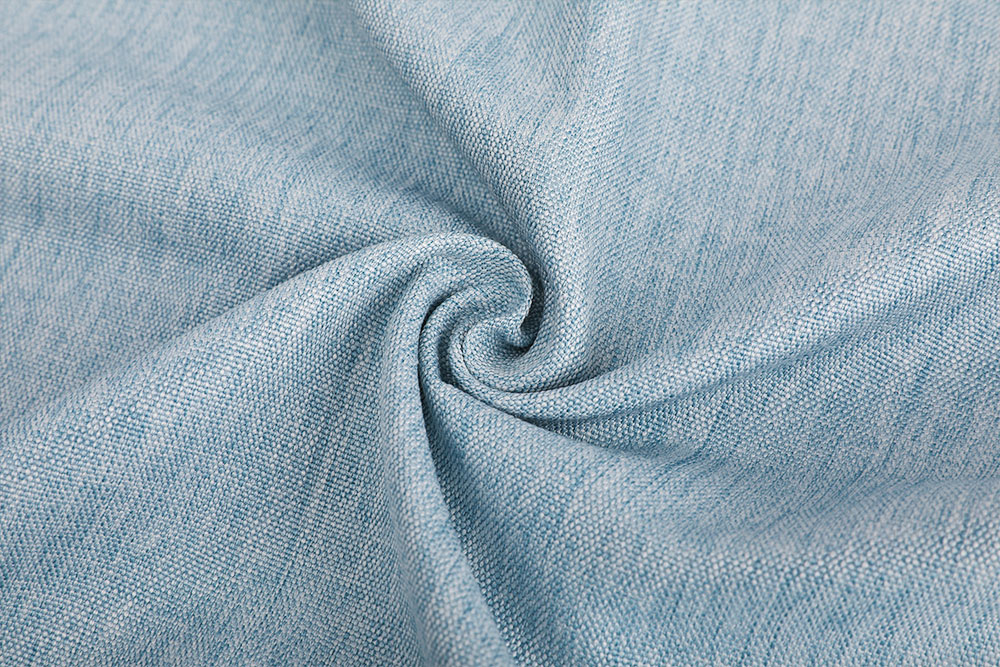The modern use of IFR linen-like fabric represents a fascinating evolution in textile innovation that aligns with several key historical trends. Historically, textiles have continuously adapted to meet evolving demands for functionality, safety, and aesthetic appeal. The integration of advanced properties such as flame retardancy into fabrics like the IFR linen-like curtain fabric illustrates how contemporary innovations build upon and refine traditional practices.
Traditionally, textiles were valued for their basic functional attributes—comfort, warmth, and durability. As the textile industry progressed, innovations began to focus on enhancing these basic properties through advanced materials and treatments. The development of flame retardant textiles, for instance, emerged prominently in the 20th century, reflecting a growing awareness of safety and performance standards. The IFR linen-like fabric fits neatly into this historical trajectory by incorporating flame retardancy directly into the fabric’s structure, rather than relying on surface treatments. This intrinsic flame retardancy offers superior protection and aligns with modern demands for enhanced safety features.
In addition to safety, the modern textile industry has increasingly emphasized sustainability. Historically, the focus was on improving the durability and comfort of fabrics, but as environmental concerns grew, there was a shift towards developing safer, more eco-friendly materials. IFR linen-like fabric exemplifies this trend by combining advanced safety features—such as anti-allergy, anti-static, and antibacterial properties—with eco-conscious manufacturing practices. The fabric’s ability to mimic the aesthetic qualities of traditional linen while incorporating these advanced functionalities reflects a broader movement towards integrating environmental and health considerations into textile production.
The modern adaptation of traditional aesthetics with advanced technology is another significant trend that IFR linen-like fabric embodies. Textiles have long been designed to replicate the luxurious textures of natural fibers. For example, silk and velvet were created to emulate the appearance and feel of high-quality materials. The IFR linen-like fabric continues this tradition by offering the look and texture of natural linen while integrating modern flame retardant technology and other advanced properties. This blend of traditional design with contemporary technology not only meets aesthetic preferences but also satisfies functional and safety requirements.

Moreover, the evolution of weaving techniques from simple handlooms to complex industrial processes has significantly influenced modern textiles. Innovations such as jacquard looms introduced intricate patterns, reflecting a continuous quest for refinement in fabric production. The sophisticated weaving techniques used in IFR linen-like fabric, including air compression deformation yarns and cationic yarn technology, showcase the ongoing advancement in textile manufacturing. These technologies enable the creation of high-quality fabrics with enhanced properties, reflecting the industry’s commitment to combining tradition with innovation.
Finally, the adaptation of textiles for specialized uses has been a hallmark of historical textile development. From military uniforms to medical garments, fabrics have been tailored to meet specific needs. The IFR linen-like fabric is designed for high-traffic environments like hotels, schools, and hospitals, demonstrating how modern textiles are adapted for specialized applications. This focus on tailored functionality aligns with historical trends of developing textiles to serve specific practical purposes.
In summary, the modern use of IFR linen-like fabric illustrates how contemporary textile innovations build upon historical trends. By integrating advanced safety features, embracing sustainability, blending traditional aesthetics with modern technology, and adapting to specialized needs, this fabric exemplifies the continuous evolution of textile design and production. Its development represents both a nod to the past and a forward-looking approach, reflecting the ongoing quest for functional, safe, and aesthetically pleasing textiles.
























 Email: [email protected]
Email: [email protected] Tel: +86-512-63221899
Tel: +86-512-63221899


 English
English Español
Español

